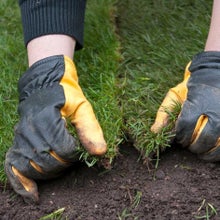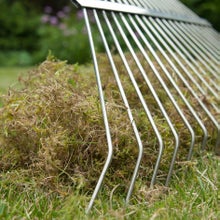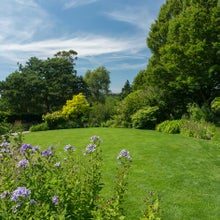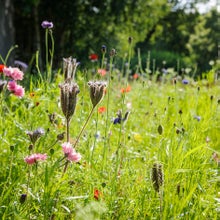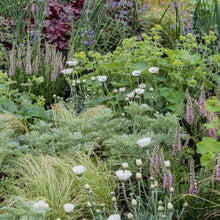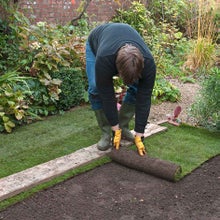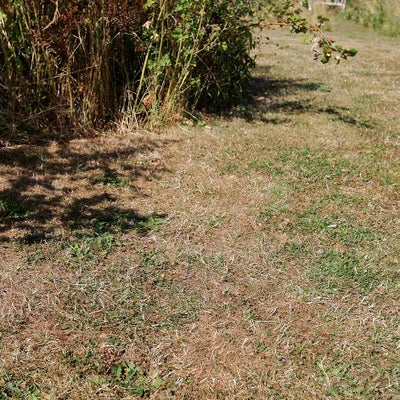
Quick facts
Timing - Summer and autumn
Difficulty - Moderate
How lawns cope in drought
The type of lawn you have will affect how well it copes with periods of drought. More formal, manicured lawns containing fine grasses (such as bents or Agrostis species) are most likely to suffer, while general domestic lawns, which tend to comprise more fescue grasses, are more robust and have greater tolerance for dry conditions.
While drought can cause the top growth to turn brown and die, in a well-established lawn the underlying roots should still be alive, ready to send up fresh leaves once rain returns. So resist the temptation to water your parched lawn – it will recover without wasting precious mains water.
Well-maintained lawns tend to be more resilient and revive more rapidly. But if the lawn is in poor condition already, or the drought is particularly severe, the grass can become weakened and the roots may deteriorate. And if the grass becomes sparse, weeds and moss will establish easily once rain arrives. These aren’t always a bad thing though, as they can help a lawn to stay green and may be more resistant to adverse conditions.
What to do during drought
Mowing
Grass growth will start to slow down in dry conditions, so mow less often and raise the cutting height to let the grass get longer, which should encourage deeper rooting. Close cutting in dry weather can weaken the grass and make it more vulnerable. See our guide to mowing for more advice.
Also let the clippings fall back into the grass to act as a mulch and hold in moisture.
If grass growth stops, then take a break from mowing.
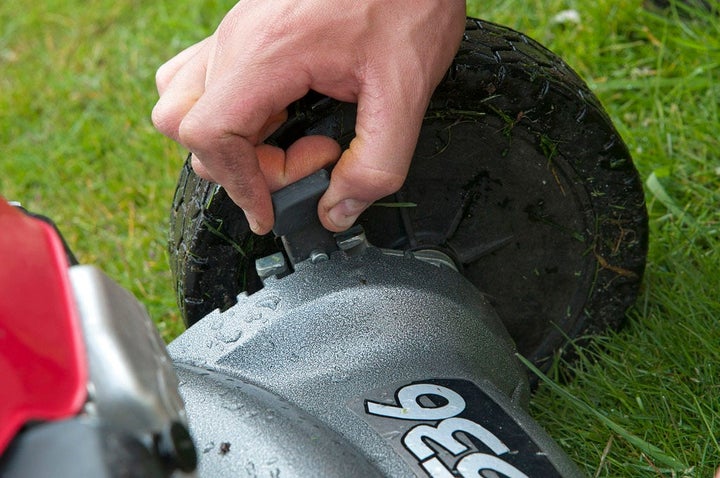
Watering
Resist the temptation to water established lawns through the summer months, however brown they get, as the grass will send up new leaves once it rains.
Only water if absolutely necessary, for example if you laid or sowed a new lawn in spring – see Making a new lawn, below, for tips on how and when to start a new lawn to resist drought. Use grey water or stored rainwater, rather than mains water, for new grass where possible.
You can find more ways to make the best use of rainwater, and the amount of mains water that could be saved each year in your garden, at mains to rains.
Helping your lawn recover
The autumn after a dry summer is the ideal time to carry out renovation and repair. This will help your lawn recover and also make it more drought resistant the following year. Re-sow any sparsely grassed areas, ideally using a drought-tolerant lawn seed mix (available from specialist lawn suppliers).
Avoid using lawn weedkiller or fertiliser on drought-affected turf in autumn. Delay treatments until the following spring, if necessary, when the grass and weeds are growing vigorously.
Be better prepared for drought
To help your lawn cope better in future droughts, make sure it’s in good condition – healthy, strong-growing and with deep, well-established roots. This is best achieved by regular lawn maintenance, including scarifying and the soil. See our lawn care guides:
When mowing in early summer, it’s a good idea to let the clippings fall back onto the lawn, rather than collecting them. They will act as a mulch and slow down the evaporation of water from the soil surface. Make sure the clippings are small, otherwise they can smother the grass and cause damage.
If you need to buy a new mower, consider a – this produces much finer clippings and sends them down into the lawn, where they coat the soil surface, helping to retain moisture and return to the soil.
Let it grow
Ask yourself if you really need a closely mown lawn. Why not let the grass grow longer and include meadow flowers and ? Without regular clipping, grass can establish more strongly and become more resilient to drought. See our guides to creating meadows and converting your lawn:
Another good option is ‘No Mow May’ – simply stop mowing at the end of April and let the grass grow – this also allows the wild plants in your lawn to flower, attracting pollinating insects. Many wildflowers are drought tolerant too.
You can either re-start mowing in June or leave the grass uncut until August, which will help it survive dry conditions and encourage a greater diversity of wildflowers. Get more on No Mow May from the campaign organiser, wildflower charity Plantlife.
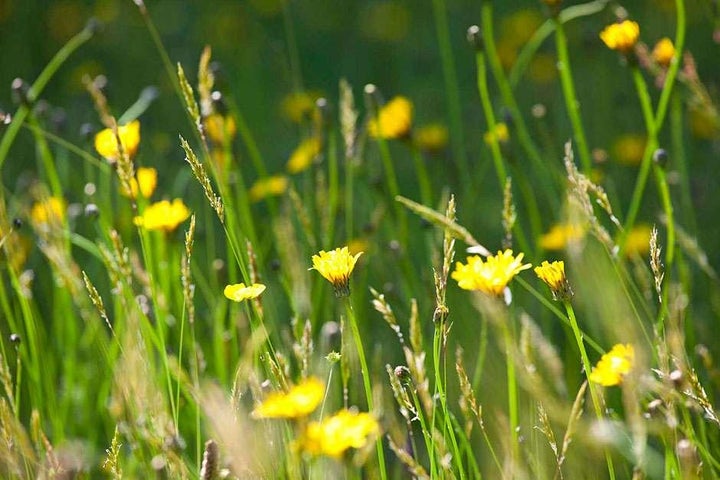
Alternatives to grass
You could also consider replacing the lawn with something more drought resistant, such as:
For more tips, see our guides to drought-resistant gardening:
Making a new lawn
If you want to create a new lawn, make sure it’s well established before any summer drought:
- Sow new lawns in late September if possible, as soil temperatures will be high enough for quick and some growth before winter. Spring-sown lawns will be less well established by summer and must be sown before April at the latest. They will need regular watering through summer
- Lay turf from September and through winter until March, whenever the soil isn’t too wet or frozen. As the grass already has roots, these will readily grow down into the underlying soil, especially if it’s damp from autumn or winter rains. These deep roots will help the turf resist summer drought
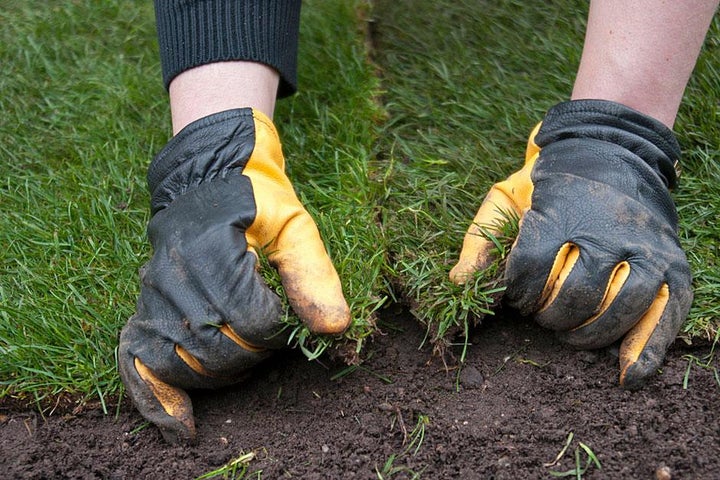
Your choice of lawn grasses is also important – look for specifically drought-tolerant seed mixes or turf, with a higher proportion of fescue grasses. More drought-resistant plants can also be added to lawn seed mixes, such as micro-clovers, which are small leaved and compact types of clover. You may need to go to specialist lawn suppliers for these.
Prepare the ground well before sowing grass or laying turf, adding plenty of organic matter (such as homemade compost) to improve the soil structure, enabling it to better retain moisture.
Also consider alternatives to a traditional lawn:
- sowing a perennial wildflower meadow will be more drought tolerant than a traditional all-grass lawn
- low-growing drought-resistant plants, such as dwarf thyme, can be used instead of a lawn for small areas that are rarely walked on
Problem solving
If your lawn has been badly affected by drought, you may need to repair or re-turf it in autumn. It’s likely that the soil condition was poor, so it’s a good opportunity to improve this by adding lots of organic matter before you re-lay or re-sow the lawn.
